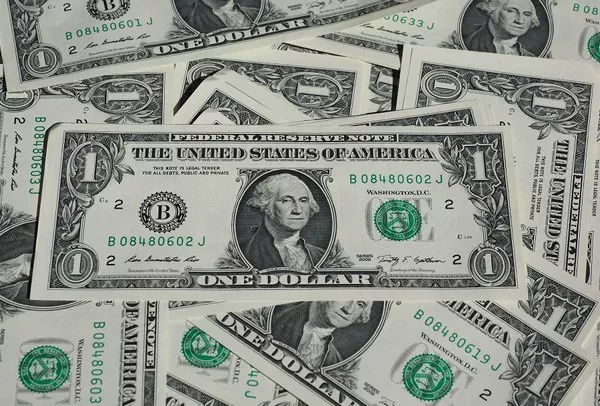In a surprising turn of events, U.S. employers defied Federal Reserve expectations in September, as they continued robust hiring, adding 336,000 jobs. This resurgence in job creation, reminiscent of the rapid pace witnessed during the pandemic, has the potential to bolster arguments for another interest rate hike.
Revisions to the July and August employment figures revealed stronger job gains during those months, totaling an additional 119,000 positions. This revelation has transformed what had appeared to be a hiring slowdown into a conundrum for the U.S. central bank.
While investors only marginally increased bets on a Federal Reserve rate hike, economists pointed out that wage growth remained subdued, and upcoming inflation data was anticipated to demonstrate ongoing deceleration.
The Federal Reserve is scheduled to convene for its next policy meeting on October 31-November 1.
Thomas Simons, a senior economist at Jefferies, commented on the situation, stating, “Payroll growth was impressive in September, but the underlying details are not as robust. Wage growth has downshifted. We do not think that this is going to sway the Fed towards a rate hike on Nov. 1, but the inflation data next week could push the scales.”
Nevertheless, the September employment report underscored the resilience of the U.S. economy amid the fastest series of rate hikes by the Federal Reserve in recent history. The report revealed a fast-paced job market, restrained month-to-month wage growth, booming hiring in sectors expected to cool, and an expanding labor force – factors that have left the unemployment rate steady at 3.8%.
The bond market reacted to the data with increased interest rates on long-term U.S. government debt. The yield on the 30-year Treasury bond jumped by 10 basis points, surpassing 5%, a level not seen since before the 2007-2009 financial crisis.
This development, along with ongoing signs of a robust job market, highlights a sensitive juncture where the Federal Reserve and the economy may find themselves. The central bank aims to engineer a “soft landing,” curbing inflation without causing harm to employment and growth – a rare scenario in recent U.S. history.
Recent surges in long-term borrowing rates may introduce fresh risks, as the shifting relationship between short- and long-term yields often precedes a recession when financing costs rise more than anticipated for businesses and households, leading to reduced spending and investment.
Acting U.S. Labor Secretary Julie Su downplayed concerns about an excessively strong job market, pointing out that the three-month average employment gain from July to September was significantly below the pace of a year ago.
The data may not alter the outcome of the Federal Reserve’s next policy meeting, but it is likely to intensify discussions regarding the correlation between labor markets and inflation, as well as the extent of necessary financial tightening given the rapid increase in Treasury yields.
John Roberts, a former top researcher at the Federal Reserve, argued in a report for Evercore ISI that recent Fed economic projections indicate policymakers are fundamentally reassessing the economy. They seem to believe that the U.S. can sustain lower unemployment levels without inflation but may require higher interest rates to curb strong demand.
The challenge now is to determine whether recent movements in long-term bond yields are imposing more restraint on the economy than necessary. This is a complex decision for the Federal Reserve, which seeks to avoid recession while also preventing a surge in prices or inflation expectations.
Krishna Guha, vice chairman of Evercore, stated, “It is far from clear to us that the Fed actually needs to pile on further with an additional rate increase, given the severity of the rises in bond yields, with clear and present danger of overshooting.”
Economists had projected job growth of only 170,000 positions in September, making the breadth of hiring a counterargument to recent claims by some Fed officials that job gains were narrowly focused in the healthcare and social assistance sector, indicating weakness in other parts of the economy.
The leisure and hospitality industry recorded the largest gains in September, adding 96,000 jobs, approximately 50% higher than its monthly average over the past year.
Combined with an unexpected surge in job openings in August, the employment report reflects an outcome that could sway sentiment toward higher interest rates, considering an economy that continues to outperform growth expectations.
The Federal Reserve maintained its benchmark overnight interest rate at 5.25%-5.50% during its last policy meeting. Two more meetings are scheduled for 2023.
The consistent job growth and persistently low unemployment rate this year have surprised many economists and policymakers who anticipated that the rapid rate hikes since March 2022 would have a more significant impact on demand, economic growth, and hiring.
Despite indications of a cooling economy, such as quit rates returning to pre-pandemic levels and a sharp decline in the ratio of jobs to unemployed individuals, the Federal Reserve issued economic projections in mid-September that still indicated the need for another quarter-percentage-point rate hike by the end of the year.
Nancy Vanden Houten, Lead U.S. Economist at Oxford Economics, concluded, “The jobs data increase the risk of another rate hike,” though the rise in bond yields will make policymakers “proceed cautiously. We think it would take an upside surprise to next week’s CPI (Consumer Price Index) report to tip the scales.”


